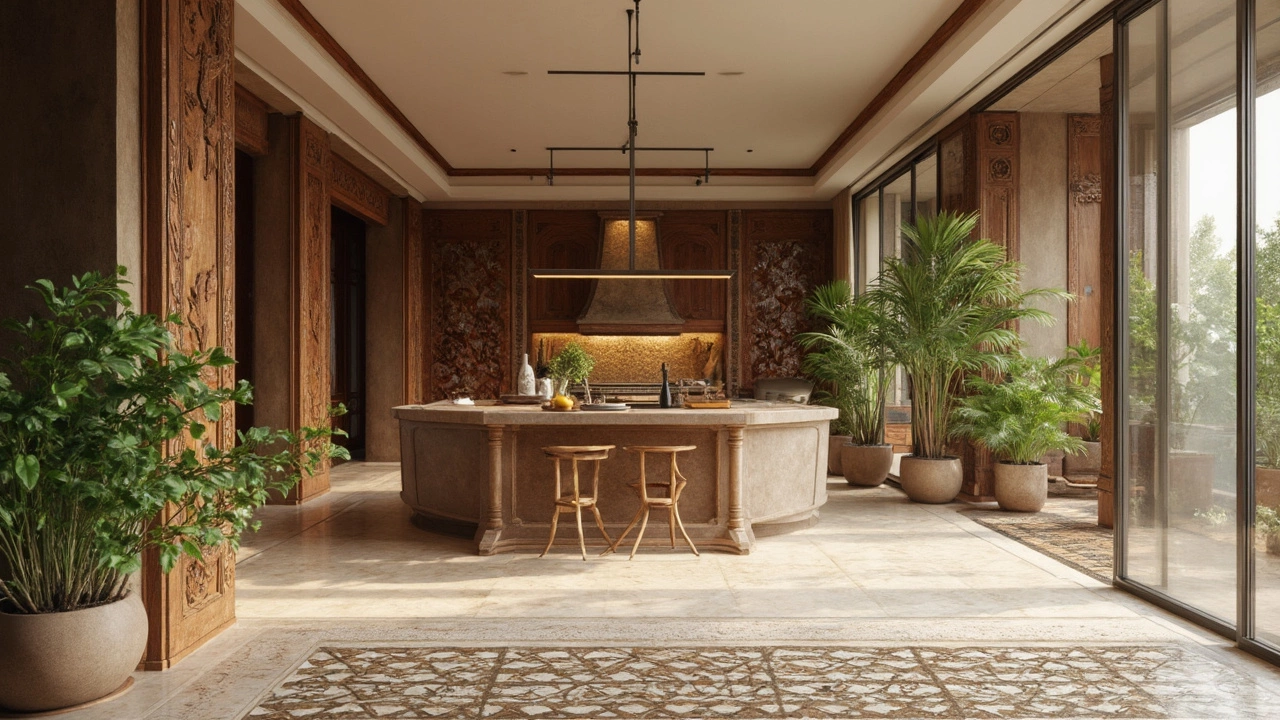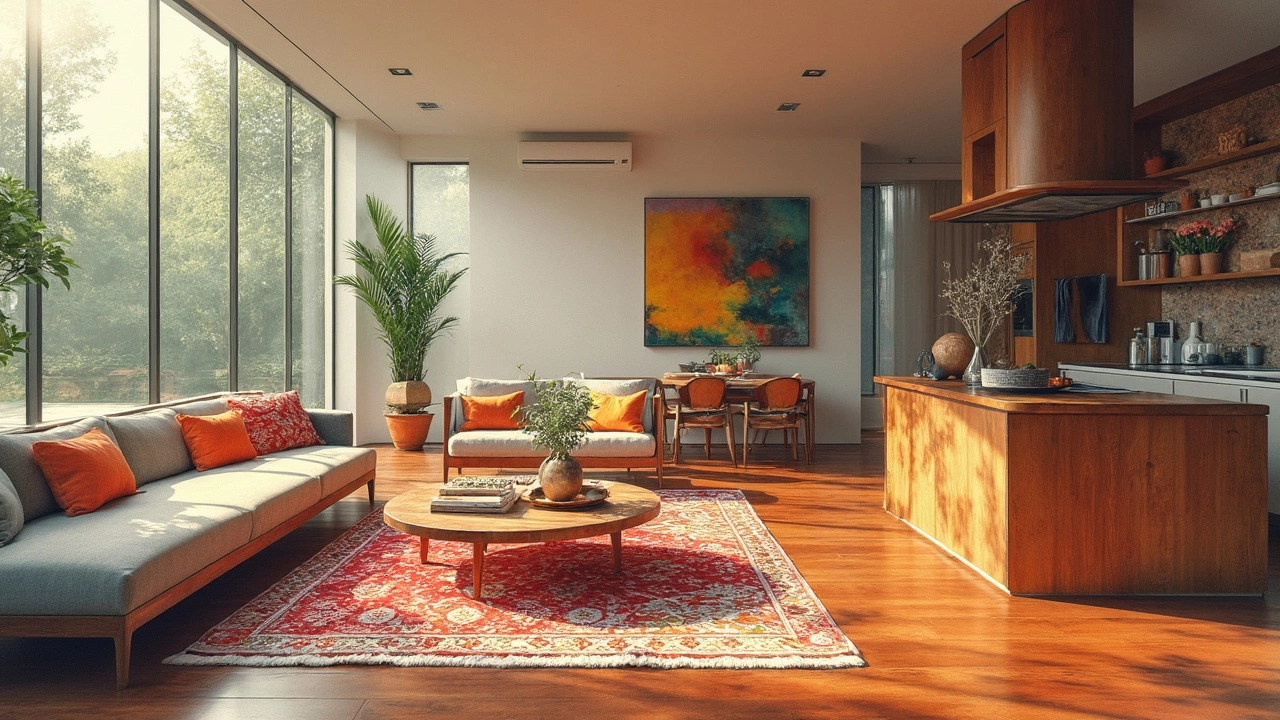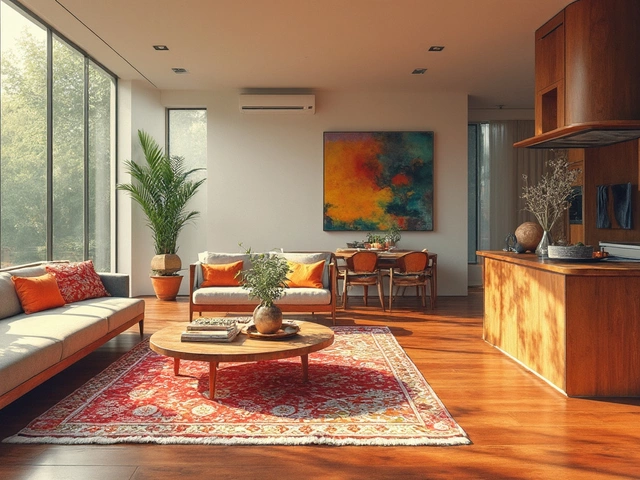Ever walked into a friend's house and marveled at how everything just seems to flow together? Chances are, they've nailed the flooring game. When it comes to keeping the same flooring in both your kitchen and living room, you're dealing with a big decision. It can create this amazing seamless vibe, where your whole space feels bigger and more connected. But there's more to think about than just aesthetics.
Imagine you're cooking in the kitchen and accidentally drop a glass. If you've got hard tiles, you might worry about chipping or breaking. On the other hand, warm hardwood can make both areas feel cozy but requires a bit more pampering. Deciding to match or mix it up depends on what matters most to you—style, practicality, or maybe both.
So how do you make the right choice? By looking into what each type of flooring can handle, you'll have a clearer idea of what's going to work best for your lifestyle. Are you all about easy maintenance? Or is the perfect look your top priority? Let’s dig into the pros and cons.
- The Case for Consistency
- When to Choose Different Flooring
- Practical Considerations
- Design Tips and Ideas
The Case for Consistency
Choosing the same flooring for your kitchen and living room can be a game changer in how your home feels. It creates a seamless transition between the two spaces, almost like they're whispering sweet design nothings to each other. This is especially awesome if you’ve got an open-plan layout. Without jarring breaks in flooring, rooms blend together smoothly, making your square footage feel bigger.
Besides the visual appeal, there's a practical upside too. Same flooring means fewer trims and transitions, which might not seem like a big deal until you've tripped over one for the thousandth time with arms full of groceries. Plus, maintaining one type of flooring means simplifying your cleaning routine. Whether it's wood, tile, or vinyl, you know exactly how to take care of it without juggling different products.
Another point is resale value. Some folks might not realize it, but buyers do pay attention to details like this. A consistent flooring choice can make your home look well-thought-out and modern, which is super appealing. It’s like giving your home an unspoken upgrade.
- Aesthetics: Smooth transitions create cohesive vibes.
- Practicality: Easier maintenance with a single type of flooring.
- Value: Potential buyers often appreciate a unified look.
In a way, it also reflects a style decision. If you’re the kind of person who prefers one solid, sleek design rather than a patchwork of textures and colors, then consistent flooring is your go-to. It lets the rest of your decor do the talking while it plays a quiet but crucial supporting role.
When to Choose Different Flooring
Some folks love having the same flooring in the kitchen and living room, but mixing it up can be pretty smart too! Imagine having tiles in your kitchen and cozy hardwood in the living room. That way, you can tackle spills, splatters, and all that kitchen drama with something super durable while kicking back on something warm and inviting in the living area.
Active families, especially, might benefit from differentiated zones. Ever had kids running in with muddy shoes? Durable, easy-to-clean tiles could be a lifesaver in that kitchen space. Meanwhile, that plush carpet or soft wood makes for a comfy living room without worrying about frequent messes.
| Option | Best For | Why |
|---|---|---|
| Tile in Kitchen | High traffic, messy cooks | Water-resistant, easy to clean |
| Hardwood in Living Room | Warm & cozy atmosphere | Comfortable underfoot, aesthetics |
| Vinyl in Kitchen | Budget-friendly, durable | Resists stains, affordable |
| Carpet in Living Room | Noise reduction, comforting | Warm and quiet |
Planning to sell soon? Different flooring might give your home a modern twist and show potential buyers how you've thought about the functionality in every room. It gives each space in your home a distinct personality.
When considering different flooring, think about how you use each space. Do you host big dinners, meaning lots of activity in the kitchen? Or is your living room more of a quiet retreat? Your lifestyle is key in deciding whether two separate flooring options might be your best bet.

Practical Considerations
Before you decide on flooring for both your kitchen and living room, let's talk about how practical each option is. Nobody wants to redo flooring every few years, so thinking about durability is key. Kitchens tend to see more spills and wear, so choosing something that can handle the mess is crucial.
Firstly, consider the maintenance factor. If you've got tile flooring in mind, remember it's super easy to clean—a simple mop usually does the trick. Hardwood flooring gives off a warm vibe and can last a long time if treated right, but it might not love water. If you hate the idea of constant upkeep, maybe stick to something more hard-wearing in the kitchen.
Another part is comfort. If you're going for comfort underfoot, think about whether cold tile floors might feel a little harsh in your living room. Many folks love the softness and warmth of wood or even laminate. It's like stepping onto a cozy rug every day, especially in the cooler months.
Cost comes into play too, of course. Here's a quick look at typical costs:
| Material | Average Cost per Sq Ft |
|---|---|
| Hardwood | $6 - $12 |
| Tiles | $5 - $10 |
| Laminate | $3 - $7 |
Your budget might help make the decision easier. Sometimes a little extra upfront for something like hardwood could save you money down the road if it means fewer repairs or replacements.
Finally, think about your lifestyle. Got kids or pets running around? Scratch-resistant options like tiles may be less of a headache. But if you're the type to always have people over, impressing visitors with chic continuous flooring might be something you value.
In the end, while aesthetics are important, making sure your flooring choice makes sense for your daily life is what will bring lasting satisfaction.
Design Tips and Ideas
Thinking about flooring transitions in your home doesn't have to feel like rocket science. When blending your kitchen flooring with the living room flooring, it's all about balance, style, and practicality. Imagine your floors as the backdrop to everything else in the room. You want it to complement, not clash.
Start by considering the color palette. If you're set on the same flooring throughout, pick a neutral tone to keep things versatile. Neutrals like grays and beiges are classic and hide wear and tear better over time. They make your space look unified and can often be easier to coordinate with various furniture styles and colors.
And what if you're leaning towards different floors for each space? You can get creative by using complementary colors or materials to make each area stand out differently without feeling disjointed. For instance, a deep-toned wood living room might segue beautifully into light and airy tile in the kitchen.
- Mix Materials: Try a combo like hardwood in the living room and tile or vinyl in the kitchen. This is practical and brings textured variety.
- Flow with Purpose: Use area rugs strategically to break up or connect spaces. Rugs can define areas or add warmth where needed.
- Accent Transitions: If you choose different flooring, think about how they’ll meet. An eye-catching transition strip or pattern can act as a feature in its own right.
- Eco-Friendly Choices: Consider sustainable materials. Bamboo, cork, or reclaimed wood are solid choices if eco-friendliness aligns with your values.
Oh, and did you know that kitchens and living rooms have the most foot traffic? According to some home experts, making durable choices here is key. Engineered wood might last longer than solid hardwood in high-traffic areas thanks to its resilient layering.
Your choice impacts more than looks; it can affect functionality, longevity, and even the home's resale value. Whether you’re seeking harmony or contrast, knowing these tips helps you match your vision with practical decisions.


